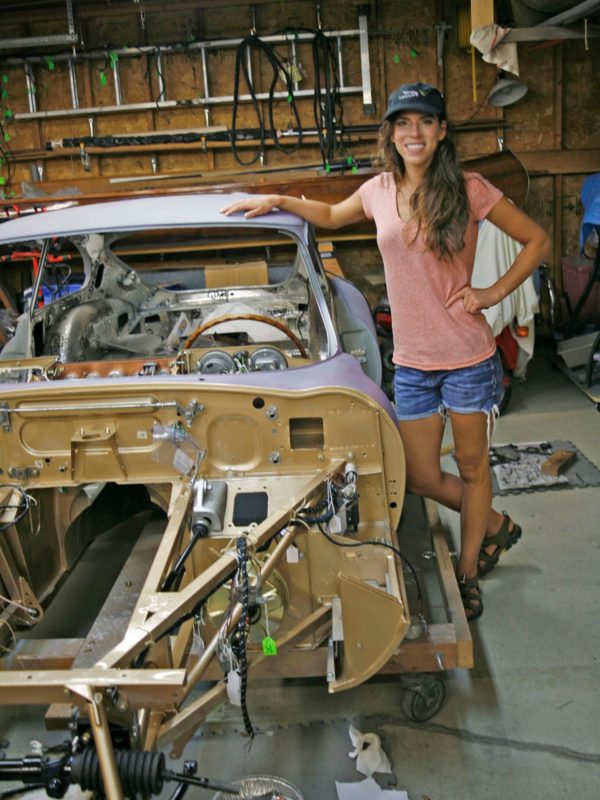by Ed & Kathleen Praxel
It was a pre-destined encounter. A depleted looking E-Type Jaguar sat in a yard along the road where logging trucks and pickups were the norm. The Jag beckoned to me. I stopped and found that the owner didn’t want to know about the car anymore. It was a Series II, 2+2. The horn honked authoritatively so it couldn’t be all bad. I’ve always been partial to XKE’s but buying a car because I felt sorry for it isn’t exactly a plan—but that’s what I did.
Typically, most car magazine articles and TV programs on modifications and restorations have difficulty starting a vehicle. The Jag started without a problem—it just wouldn’t stop! I couldn’t slip the clutch because it was an automatic, so I pulled the coil wire. I was told later by a knowledgeable source that a fan motor could generate current and the engine would stay running. This was the first of several idiosyncrasies I encountered on the Jag.
To keep this in perspective, my wife and I are octogenarians and became enthusiasts on a quest to preserve a work of art. The E-Type is one of only a few of cars displayed in the Museum of Modern Art, New York City. Our experiences may be of benefit to anyone considering a restoration.

I relied on Moss Motors’ parts catalogs for their excellent diagrams. The different parts categories became the basis for our approach to restoring the Jag and we were aware that we were following in the shadow of the previous owner(s) repairs. Something I’ve found from times past is that I can’t know too much about a project. I also acquired a factory workshop and parts manual, and the owner’s handbook for the 2+2.
A restoration requires thorough documentation like photographs and note taking. It also demands lots of space for storage of parts and, most importantly, commitment of time. Our original goal of making the Jag into a “driver” morphed into a total “nuts, bolts, and screws” restoration. We had decided to return the car to its original DNA (European version) and upgrade as many items as possible, including replacing the automatic transmission with a manual.
I wanted to do as much of the restoration as possible. However, if I couldn’t do the work I located people with expertise in that area to assist, this included engine machine work, body work and painting. I located a body and fender man who said he’d work on the Jag on site. He had an affinity for the car and when he was finished he stepped back to view his work and commented, “Now you can even paint it black.”
When people first see the Jag they ask, “What is it?” and then, “How fast can it go?” and I reply, “Look at the speedometer.” This produces a look-see and then a look at me and back to the speedometer. The next question is “How fast have you had it?” To which I say with a grin, “Fast enough for the front end to get a little light.” MM


As a nod to it’s serious lines, we named the Jag “Elvira.” Our neighbor came by to visit and observe the progress on the Jag, and she was looking forward to the celebratory ride when it was completed. The engine goes in a steep angle due to the transmission having to be attached to it. This required an engine hoist with a lever for best results. The engine was lowered in gradual increments and a dolly put under the back of the transmission to help steady it.


I have yet to locate a wiring diagram that matches the 1970 S2 2+2. The wiring can’t be too well documented. and we attached string tags to the old one and new looms for item identification. I Also drew a schematic in the colors of the wires. Most guy’s hands wont fit where wires have to be connected. In the book “Jaguars E-Type: The Definitive History” by Phillip Porter, there’s a picture of a woman doing cockpit wiring. So, my wife did the electrical work!










'Rescuing Elvira' has no comments
Be the first to comment this post!